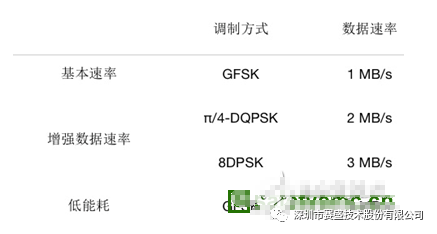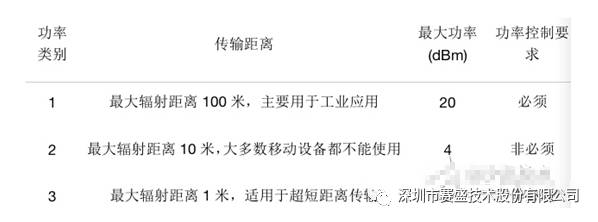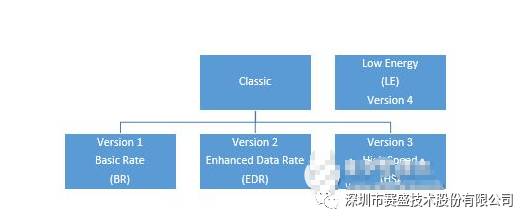Everything begins with connectivity. The Internet of Things (IoT) is rapidly integrating into our daily lives and various industries, with increasingly intelligent and convenient interactions between people and objects, as well as between objects themselves. Wireless communication has become an invisible bridge in IoT connectivity, with mainstream communication technologies such as Bluetooth, WiFi, and ZigBee each having their unique advantages, providing strong support for the implementation of IoT.
Tektronix’s “IoT Wireless Communication Testing” session will feature experts sharing key design and testing experiences regarding module selection and EMI testing for Bluetooth, WiFi, and ZigBee, helping numerous design companies and engineers tackle design challenges.
Selecting Bluetooth Modules: Three Considerations
When selecting Bluetooth or other RF modules for IoT devices or other projects, you may find that there are far more viable solutions on the market than you initially thought. Typically, module manufacturers or suppliers categorize thousands of available modules based on transmission rate, transmission distance, frequency band, certification, package size, and more.
While comprehensive consideration is important, certain factors are more critical. By focusing primarily on transmission rate, transmission distance (or coverage), and power consumption, you can effectively narrow down your options. Balancing these factors will help you choose a module that directly impacts the end-user experience. We will quickly examine these parameters and how they affect your device’s performance.
1) Transmission Rate
The transmission rate or data rate is usually the first consideration for designers and developers, as it forces them to think about the type of information that needs to be transmitted between devices. For example, the data rate required to transmit high-quality music to headphones is significantly different from that required for a basic heart rate monitor.
Theoretically, Bluetooth Low Energy (BLE) does not support its maximum bandwidth (1 MHz) because its focus is on simple information transmission. If data is transmitted at high speeds, BLE will consume more power, which contradicts its original design concept. If high-speed transmission is required, consider higher-rate EDR Bluetooth or Wi-Fi. Any increase in speed will almost inevitably consume more power.

2) Power Class and Transmission Distance Coverage
On manufacturer and distributor websites, Bluetooth modules are categorized by power class. The higher the power class, the further the transmission can reach. Like any other wireless technology, Bluetooth networks have limited distances, which vary by version.

Within the same version, the supported transmission distance will still vary with different power classes. The actual signal transmission distance can change based on specific environmental conditions, such as transmission conditions, materials, manufacturing tolerances, antennas, and batteries. In addition to the requirements specified in the Bluetooth standard, devices must also meet the power requirements set by local government spectrum regulatory agencies. For more information related to these requirements, please refer to our previous blog posts.
3) Power Consumption
Power consumption is primarily related to transmission rate and distance. Since Bluetooth devices are generally battery-powered, the operating current/voltage of the device is an important consideration, as it directly determines charging time and battery life.
By further categorizing modules into different versions, Bluetooth SIG simplifies this initial decision. Bluetooth technology versions are divided into classic and low energy (LE) versions. The classic Bluetooth versions 1, 2, and 3 are optimized for data transmission rates. In the classic version, it is divided into Basic Rate (BR), Enhanced Data Rate (EDR), and High Speed. Bluetooth Low Energy focuses more on simple information transmission while maximizing the battery life of electronic devices.

In addition to these classifications, manufacturers will list the transmit and receive currents and/or power, which are primarily used in module selection. If you can test the expected final device usage, you can more easily evaluate the module and balance various factors in specific applications. Our blog on power consumption further discusses such testing.
Finding the right Bluetooth module requires balancing transmission rate, transmission distance, and power consumption. Once you narrow down your options, you can further refine them based on cost, space, and compatibility. Finally, you can use testing equipment to evaluate the modules. Download our application guide on how to select Bluetooth modules for more detailed information on this testing.
Ensuring Bluetooth Design Passes EMI Compliance Testing
Before any new device supporting Bluetooth is launched, whether it is a sophisticated communication device or a simple USB dongle, it must meet the stringent EMI radiation requirements set by the FCC.
In the past, designers typically had to wait until the end of the design cycle to send products to testing agencies for formal compliance testing. Unfortunately, many Bluetooth designs do not pass on the first attempt. The costs of multiple trips to testing agencies can be very high, and depending on the root causes, it can easily lead to delays in project timelines.
A much better approach is to perform pre-compliance checks early on to identify and correct any EMI issues. Intuitively, many designers believe they do not have the equipment or expertise to conduct pre-compliance testing.
However, with modern PC-based spectrum analysis software and Tektronix’s affordable USB-based spectrum analyzers, such as the RSA306 or RSA 500/600 series, performing these checks has become quick and easy. The video “Basic EMI Pre-Compliance Testing for Bluetooth Devices” demonstrates how to use the Tektronix RSA607A real-time spectrum analyzer in the lab to perform in-band radiation and spurious signal testing.
Pre-compliance testing is crucial to ensure you pass EMI/EMC compliance testing at the testing agency. By using the appropriate equipment, Bluetooth wireless testing can also be performed easily. Watch this video to learn how to test Bluetooth devices for proper startup and information transmission. Be sure to download our RF signal electronic guide to quickly identify the signals you are looking for.
This article discusses the selection of Bluetooth modules and EMI pre-compliance testing, which are common challenges faced by engineers during Bluetooth module design and often a source of headaches. The available options are far more numerous than one might imagine, and the focus should be on transmission rate, transmission distance (or coverage), and power consumption to effectively narrow down the selection. EMI pre-compliance testing can significantly reduce design development time and costs.

About Saisheng Technology:
Founded in2005, listed in 2016, stock abbreviation: Saisheng Technology, stock code: 839017. Focusing on electromagnetic compatibility (EMC) and other engineering technologies, providing enterprises with product EMC issue rectification, product EMC design, EMC technology training, and system construction consulting services.
Scan for surprises!
1. Follow Saisheng’s WeChat public account:Learn more about electromagnetic compatibility technology!

2. Join the QQ Saisheng Technology group: Discuss issues with more EMC experts!

【Disclaimer: Some materials are sourced from the internet, and the purpose of reprinting is to convey more information and share, which does not imply endorsement of their views or verification of their authenticity, nor does it constitute other advice, only providing a communication platform, and we are not responsible for their copyright. If there is any infringement, please contact us for timely modification or deletion.